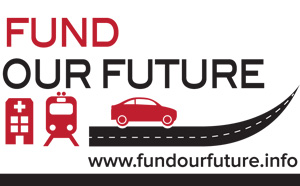Variation to Prohibited Burning Period - Extended 1 April - 14 April 2025
Due to seasonal conditions, the City of Wanneroo has extended its Prohibited Burning Period until 14 April 2025 inclusive. No Permits to burn will be issued prior to this date.
How to address Australia’s ‘90 minute cities’
Published Friday, 6th May 2016
Australia’s fast-growing outer suburbs deserve the urgent focus of politicians and policy-makers at the Smart Cities Summit, according to a key advocacy group.

- Federal Government Smart Cities Summit in Melbourne on Friday 29 April 2016
- New research by PwC shows investment in outer suburbs could help solve outer suburban disadvantage
- New national and global opportunities could come from the right investment
Australia’s fast-growing outer suburbs -- where residents are often forced to spend hours in the car to get to work -- deserve the urgent focus of politicians and policy-makers at tomorrow’s Smart Cities Summit, according to a key advocacy group.
The Summit, which is being hosted by the Federal Government in Melbourne on Friday (29 April, 2016), will address a number of topics, including the so-called ‘City Deals’ approach, which has been used successfully in the UK across different levels of government to achieve strategic outcomes for regions.
New research on the ‘City Deals’ experience in the UK and Canada’s strategic infrastructure fund has been commissioned by the National Growth Areas Alliance (NGAA).
The work, carried out by PWC, shows there is an opportunity for Australia to capitalise on the growth in the outer suburbs, by establishing a dedicated fund to address the lack of infrastructure there.
These suburbs, on the outskirts of the nation’s capital cities – from Wanneroo in Perth’s north through to Penrith in Sydney’s west – are currently home to five million Australians, but in 15 years they will be home to 7.5 million people.
The findings of the PwC research include:
- With the right investment, these areas could be competitive not only nationally, but globally
- A dedicated fund could take a holistic and integrated approach to Australia’s outer suburbs, across different types of infrastructure
- The work makes recommendations on how such a fund could be implemented in Australia, including the use of value capture and appropriate institutional arrangements
Previous research already shows that around $5 billion is needed each year over the next 15 years to catch up with the infrastructure backlog in outer growth areas and to keep up with the expected growth.
“The Federal Government and Opposition have been talking about ’30-minute cities’, but at the moment, it’s more like ’90-minute cities’ in our areas,” says the Executive Officer of the NGAA, Ruth Spielman, who will be attending the Summit on Friday.
“We have consistently argued for a long-term strategic approach based on merit and good planning – not on election cycles,” says Ms Spielman. “This report shows how such an approach could be applied. It is a practical pathway to many of the outcomes that Government is seeking for our cities.”
The NGAA is behind the Fund our Future campaign, which is calling for a dedicated fund to fix road, public transport and health infrastructure problems in the fast-growing outer suburbs now and into the future.
“The right infrastructure opens the door to opportunity, so a dedicated infrastructure fund for fast-growing outer suburbs is also about equal access to good roads, public transport and health facilities – no matter where you live,” says Ms Spielman.
A leading peak body, the Committee for Sydney, has endorsed the research.
“The so called ‘edges’ of our cities are central to the future of our economy. How they develop is a matter of great national importance,” says CEO Dr Tim Williams. “They need investment and they need coordinated governance. This excellent research sets out a clear direction for achieving this. ”
Residents and those working in fast-growing outer suburbs are encouraged to take part the Fund our Future campaign by signing and share our petition at www.fundourfuture.info and liking us on Facebook
Please note: The NGAA will also be at the Federal Budget lockup and a spokesperson will be available for comment.
Media contact: Susi Hamilton, Campaign Communication Officer, National Growth Areas Alliance 0448 388 934.
More articles in the news archive.